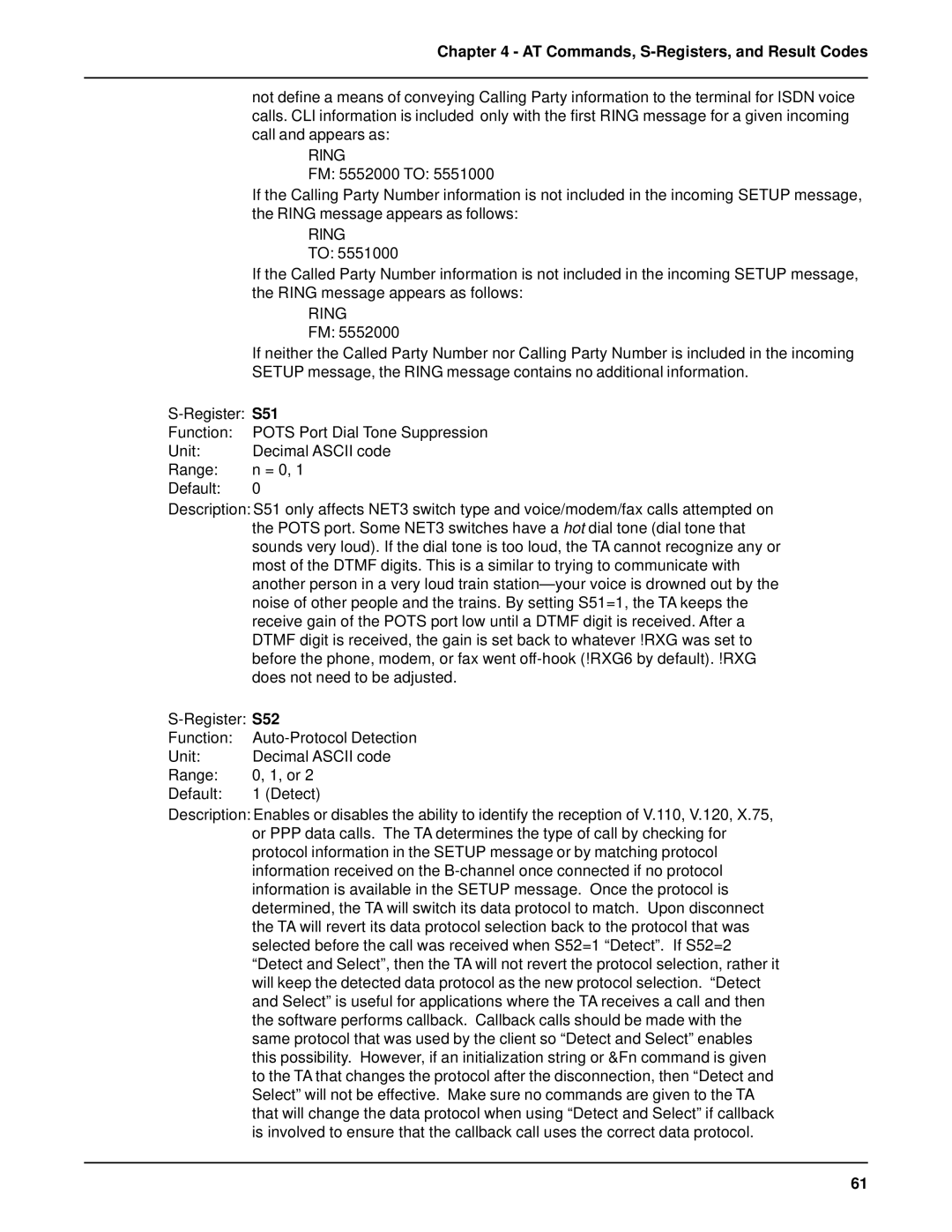
Chapter 4 - AT Commands, S-Registers, and Result Codes
not define a means of conveying Calling Party information to the terminal for ISDN voice calls. CLI information is included only with the first RING message for a given incoming call and appears as:
RING
FM: 5552000 TO: 5551000
If the Calling Party Number information is not included in the incoming SETUP message, the RING message appears as follows:
RING
TO: 5551000
| If the Called Party Number information is not included in the incoming SETUP message, |
| the RING message appears as follows: |
| RING |
| FM: 5552000 |
| If neither the Called Party Number nor Calling Party Number is included in the incoming |
| SETUP message, the RING message contains no additional information. |
S51 | |
Function: | POTS Port Dial Tone Suppression |
Unit: | Decimal ASCII code |
Range: | n = 0, 1 |
Default: | 0 |
Description: S51 only affects NET3 switch type and voice/modem/fax calls attempted on the POTS port. Some NET3 switches have a hot dial tone (dial tone that sounds very loud). If the dial tone is too loud, the TA cannot recognize any or most of the DTMF digits. This is a similar to trying to communicate with another person in a very loud train station— your voice is drowned out by the noise of other people and the trains. By setting S51=1, the TA keeps the receive gain of the POTS port low until a DTMF digit is received. After a DTMF digit is received, the gain is set back to whatever !RXG was set to before the phone, modem, or fax went
Function:
Unit: | Decimal ASCII code |
Range: | 0, 1, or 2 |
Default: | 1 (Detect) |
Description: Enables or disables the ability to identify the reception of V.110, V.120, X.75, or PPP data calls. The TA determines the type of call by checking for protocol information in the SETUP message or by matching protocol information received on the
61
